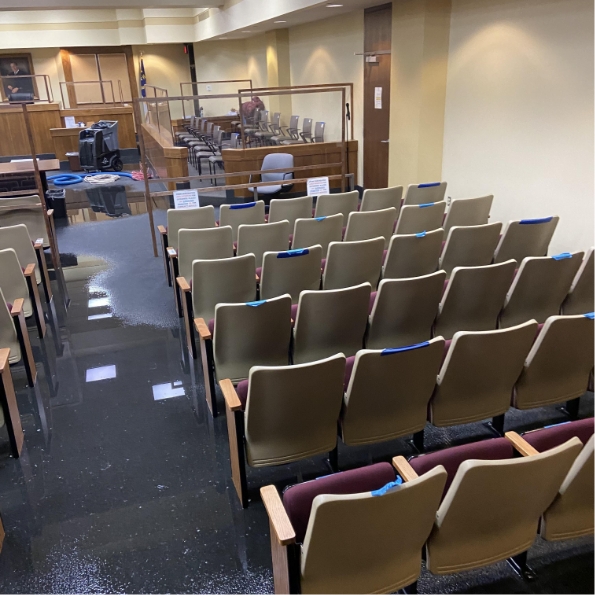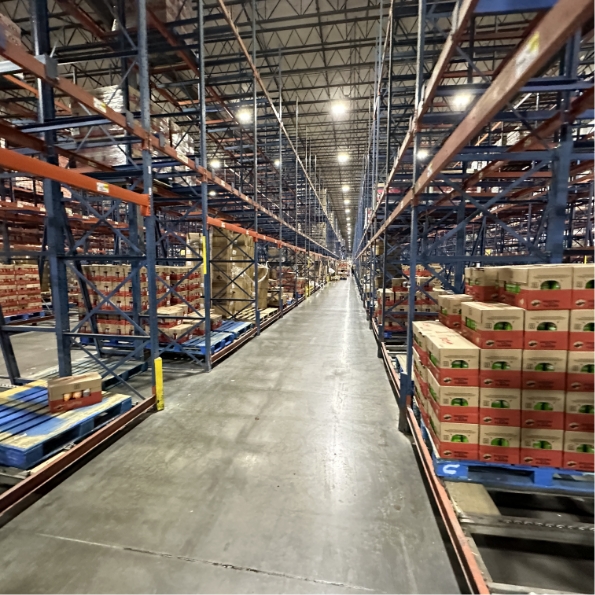The Costly Impact of Water, Fire, and Mold Disasters on Distribution Centers Over the Last 5 Years

In the past five years, distribution centers have faced significant challenges due to water, fire, and mold disasters. These incidents not only disrupt operations but also pose serious threats to safety, inventory, and the overall supply chain. Here’s an overview of how these disasters have impacted distribution facilities, backed by specific statistics:
Water Disasters
- Operational Disruptions: According to the Federal Emergency Management Agency (FEMA), flooding accounts for over $3 billion in damages annually to commercial properties in the United States alone. In 2020, severe weather events caused an estimated $95 billion in losses, affecting numerous distribution facilities.
- Inventory Losses: A study by the Institute for Business & Home Safety found that 25% of businesses do not reopen following a major flood due to significant inventory loss. The 2019 Midwest floods, for instance, resulted in over $12.5 billion in damages, heavily impacting distribution centers and warehouses.
- Infrastructure Damage: The American Society of Civil Engineers reports that water-related disasters can lead to structural damages costing upwards of $6,000 per square foot for commercial buildings.
Fire Disasters
- Destruction of Property: The National Fire Protection Association (NFPA) states that from 2015 to 2020, there were an average of 1,210 warehouse fires per year in the U.S., causing annual direct property damages of approximately $155 million. Wildfires in California alone caused $12.5 billion in insured losses in 2017 and $24 billion in 2018, significantly impacting distribution facilities.
- Safety Concerns: Warehouse fires result in an average of 19 civilian injuries per year. The need for quick evacuation and the potential for toxic smoke inhalation add to the urgency of addressing fire hazards.
- Business Interruption: The aftermath of a fire often involves prolonged business interruptions. According to the Business Continuity Institute, 80% of businesses without a disaster recovery plan suffer prolonged periods of downtime after a fire, severely disrupting the supply chain.
Mold Disasters
- Health Hazards: The Occupational Safety and Health Administration (OSHA) reports that mold exposure is linked to various health problems, contributing to an estimated 4.6 million cases of asthma in the U.S. annually. Mold outbreaks in facilities can necessitate closures for remediation, impacting productivity.
- Inventory Contamination: The World Health Organization (WHO) notes that 10-50% of indoor environments in North America, Europe, Australia, Japan, and India are estimated to be affected by dampness, which can lead to mold growth and contaminate products. This is particularly detrimental to food and pharmaceutical industries.
- Structural Concerns: Mold can also weaken building materials over time. The cost of mold remediation can range from $500 to $6,000 for small areas, but large-scale infestations in commercial properties can escalate to $30,000 or more, according to the Environmental Protection Agency (EPA).
Next Time You Have A Disaster—Call Sasser!
Over the past five years, water, fire, and mold disasters have significantly impacted distribution facilities, highlighting the importance of partnering with a restoration company you trust. These incidents not only disrupt daily operations but also pose long-term challenges that can affect the entire supply chain.
Investing in robust disaster response plans, improving infrastructure resilience, and prioritizing employee safety are critical steps distribution facilities must take to mitigate the impact of these disasters. Sasser Restoration works with you, responds immediately and takes great care to ensure all work is done to the highest quality and follows all industry-standard protocols.
If you’re ready to discuss how Sasser Restoration could bring your building back to life after disaster strikes, reach out to our team online, via email at info@sasser247.com or call our 24/7 emergency line at (844) 449-1144.
Contact a Sasser Professional


